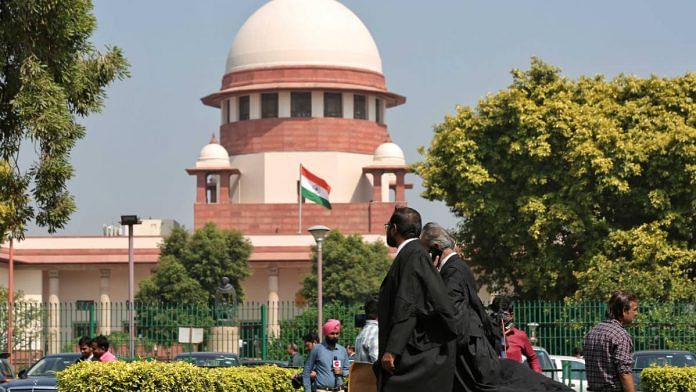New Delhi: The Uttar Pradesh forest department has come up with a plan to revive the glory of Mathura — a significant part of India’s religious and cultural heritage — through “reincarnation of its ancient forest areas”. And for this, it wants to undertake an eco-restoration drive that would see the planting of native broad-leaved species, particularly those “said to be beloved to Lord Krishna”, ThePrint has learnt.
Setting out its plan in an application filed before the Supreme Court in May, which came up for hearing earlier this month, the state forest department sought permission from the apex court to uproot Prosopis Juliflora (PJ) — an invasive alien species — in 37 ‘ancient forest’ areas around Mathura and plant native species such as Kadamb, Varna, Tamal, Peelu, Bargad, Peepal, Pakhad, Molshree, Khirani, Aam, Amvala, Arjun, Palaas, Baheda etc. ThePrint has seen a copy of the application.
Originally from Latin America, PJ was reportedly introduced in India between 1857 and 1940. However, over the years, the invasive species has eroded the natural habitat for animals in the forest areas and its high prevalence created socio-economic problems such as reduction of pastures, farmlands and harm to cattle due to poisonous and sharp thorns, the application has claimed.
The forest department’s application is being heard by a special bench that has, over a period of time, monitored development work in the Taj Trapezium Zone (TTZ) — a defined area of 10,400 square kilometres around Taj Mahal to protect the monument from pollution. In December 1996, the top court had delivered the ruling creating TTZ in response to a public interest litigation (PIL) seeking protection of the monument.
Since Mathura division is one among many falling in the TTZ, the state is bound to take the SC’s permission before carrying out any developmental or industrial work in the area.
The special bench has now asked advocate A.D.N. Rao — who is assisting the court in the case — to give their suggestions on the forest department’s eco-restoration proposal that is likely to cover 490 hectares of forest cover.
‘Forests part of Braj parikrama’
In the application, the department has referred to several research papers purportedly declaring PJ as a harmful species that “inhibits germination of seeds of other species” owing to a chemical “leached” from its leaves. It said many “public representatives, senior officers and religious personalities of the Braj” have expressed their desire to replace PJ with native species to “improve and restore historic and tangible heritage value of the area”.
Revived forest patches with native trees would also mitigate the human-monkey conflict, which has become a menace owing to depletion of the animal’s habitat, claimed the application. It further added that expansion of PJ is responsible for this as it has led to the creation of swathes of unsuitable habitat for monkeys, as well as the native fauna.
Hence, plantation of native trees would not just re-establish floral biodiversity, but also lead to tremendous increase in faunal biodiversity, claimed the application.
Giving a religious perspective to the plan, the department claimed that there are 137 ancient forests in the Mathura division that find a place in India’s religious scriptures. Of them, 48 represent 48 deities and are, therefore, part of the Braj Mandal Parikrama [journey of the area]. The pilgrims, the application added, worship these ancient forests as part of the parikrama.
While four forests continue to exist with the same name and at the same place as described in the scriptures, 37 have been located and the process to identify seven more patches is on, said the application. Out of the 37 that have been identified, 26 fall within reserve forest areas and 11 are earmarked as community or private land, it added.
The project will be implemented in the 37 forest patches identified in three phases in the next three years, the application added, highlighting the “negative consequences” PJ has caused to the native flora and biodiversity.
The increased climatic variability in recent years has forced change in land and water management that has facilitated further invasion of PJ, the application claimed. Additionally, its most extreme and extensive root system makes it even more invasive.
Explaining the procedure to be followed, the application disclosed that patches of 1.3-hectare-to-10-hectare area would be identified, according to the availability of land on the site. There would be a site-specific plan comprising parameters such as soil type, moisture regime, salinity and other associated edaphic characters. These parameters shall be taken as benchmark data.
There would be a monitoring committee to review and carry out an annual assessment of the project, the application stated.
(Edited by Smriti Sinha)
Also read: Centre won’t touch special provisions for Northeast, says Tushar Mehta at Article 370 hearing






